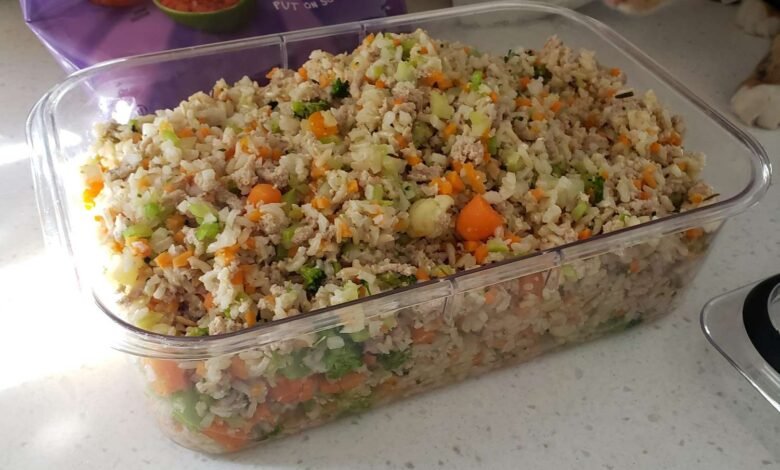How to Make Homemade Food for Your Dog: A Beginner’s Guide

Introduction:
Making homemade food for your dog can be a rewarding experience that ensures they receive nutritious and wholesome meals tailored to their individual needs. By preparing meals at home, you have full control over the ingredients and can avoid many of the additives and preservatives often found in commercial dog foods. In this guide, we’ll walk you through the steps to create balanced and delicious homemade meals for your furry friend.
Step 1: Consult with a Veterinarian Before embarking on a homemade dog food journey, it’s essential to consult with your veterinarian. They can provide valuable insights into your dog’s nutritional requirements, any specific dietary restrictions or allergies, and offer guidance on formulating a balanced diet.
Step 2: Choose High-Quality Ingredients Selecting high-quality ingredients is crucial for ensuring your dog’s homemade meals are nutritious and safe. Opt for lean proteins such as chicken, turkey, beef, or fish, and include a variety of vegetables and carbohydrates like sweet potatoes, carrots, peas, and brown rice. Avoid ingredients that are toxic to dogs, such as onions, garlic, grapes, and chocolate.
Step 3: Prepare and Cook the Ingredients Once you’ve gathered your ingredients, it’s time to prepare and cook them. Thoroughly cook any meat to eliminate the risk of bacterial contamination, and remove any bones or skin that could pose a choking hazard. Steam or lightly cook vegetables to retain their nutrients, and consider pureeing them for easier digestion, especially for senior dogs or those with dental issues.
Step 4: Balance the Nutrients Balancing the nutrients in your dog’s homemade meals is essential for their overall health and wellbeing. Aim for a diet that includes the right proportions of protein, carbohydrates, fats, vitamins, and minerals. While it’s possible to achieve this through careful selection and combination of ingredients, you may also consider incorporating canine-specific supplements under the guidance of your veterinarian.
Step 5: Portion Control and Storage Once your homemade dog food is prepared, it’s important to practice portion control to prevent overfeeding and maintain a healthy weight for your dog. Consider your dog’s size, age, activity level, and any underlying health conditions when determining portion sizes. Store any leftovers in airtight containers in the refrigerator or freezer to maintain freshness and prevent spoilage.
Step 6: Monitor Your Dog’s Health After transitioning your dog to a homemade diet, closely monitor their health and wellbeing. Keep an eye on their weight, energy levels, coat condition, and stool quality, as these can indicate whether the diet is meeting their nutritional needs. If you notice any changes or concerns, consult with your veterinarian for further guidance and adjustments to the diet as needed.
Conclusion:
Making homemade food for your dog can be a wonderful way to provide them with nutritious and wholesome meals tailored to their individual needs. By following these steps and consulting with your veterinarian, you can ensure that your furry friend receives the balanced diet they need to thrive. Enjoy the journey of preparing delicious homemade meals for your beloved canine companion!




